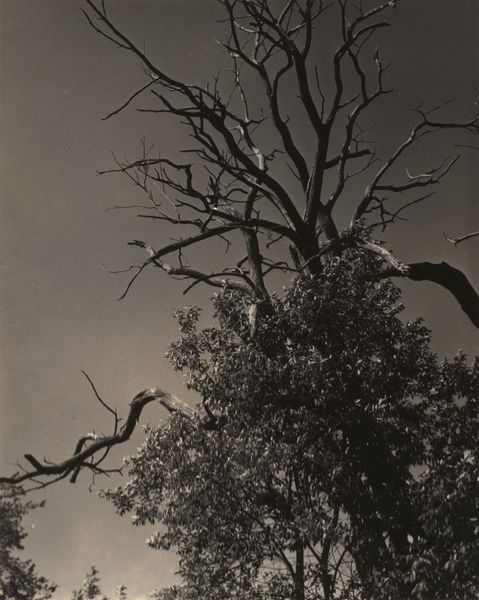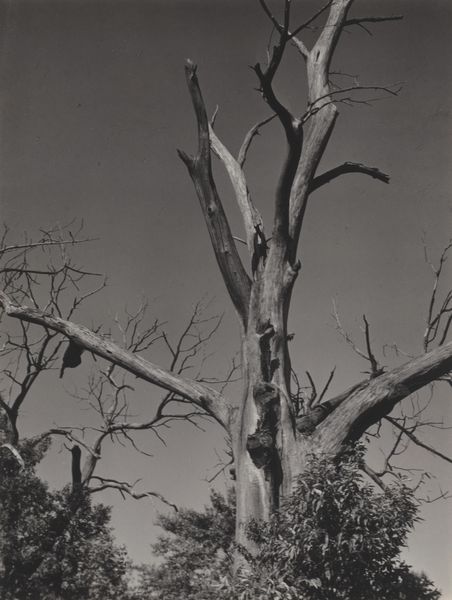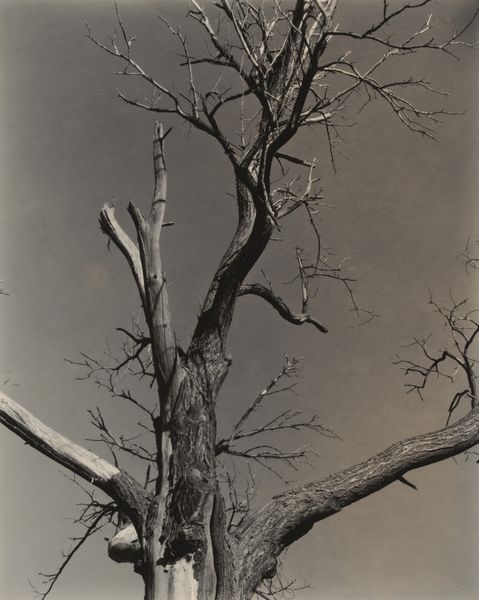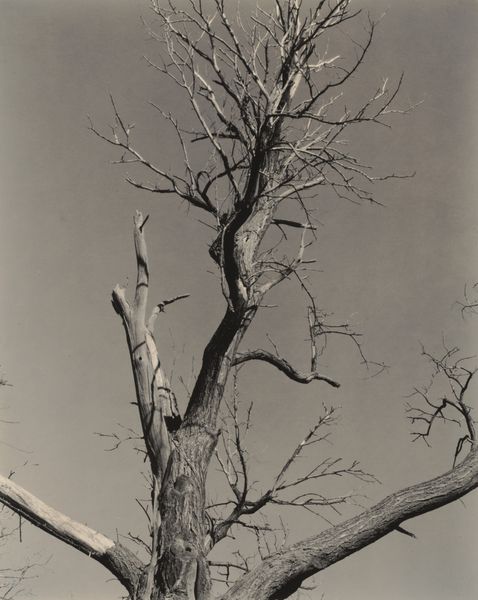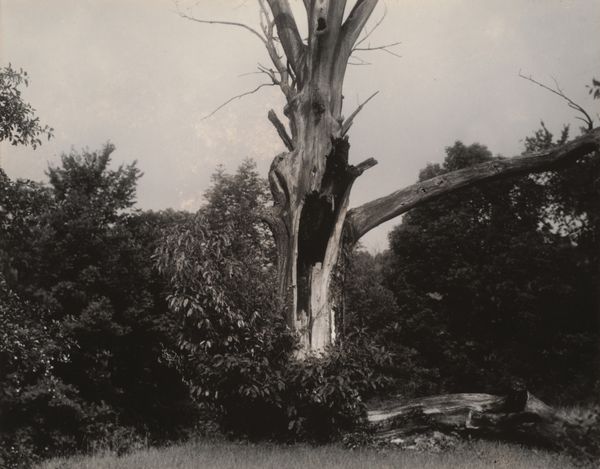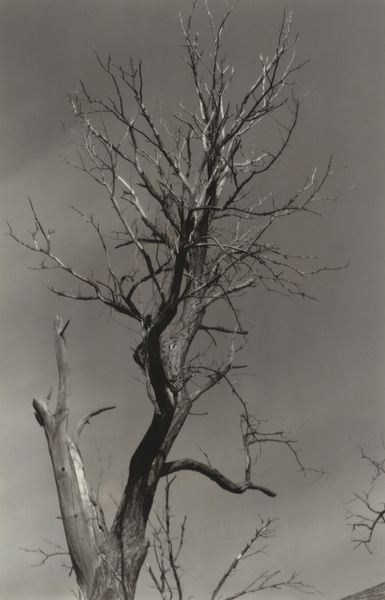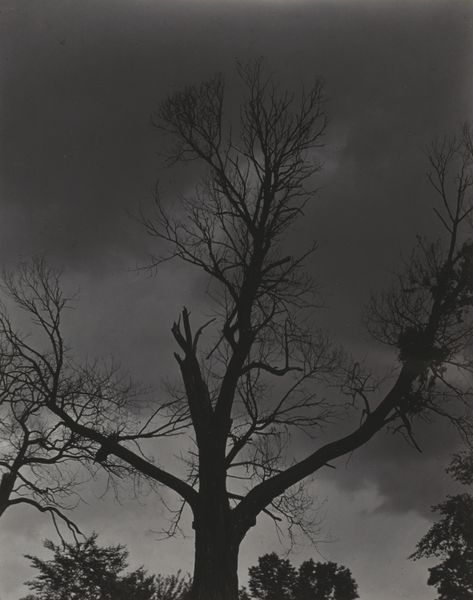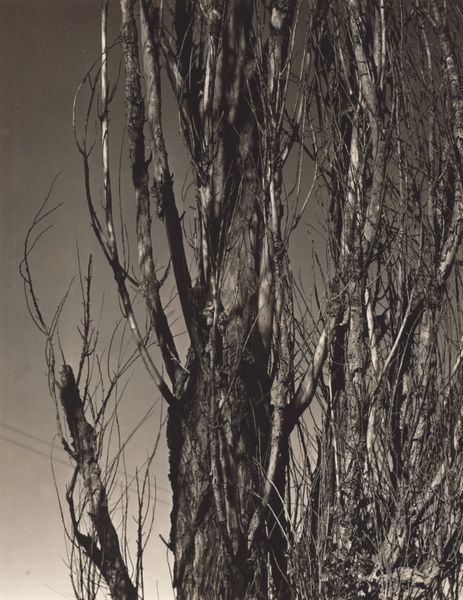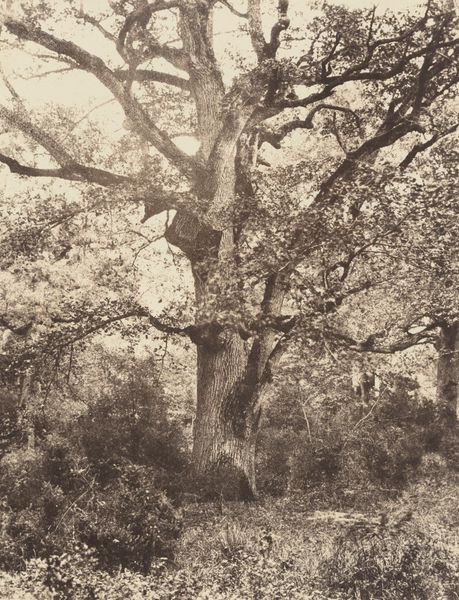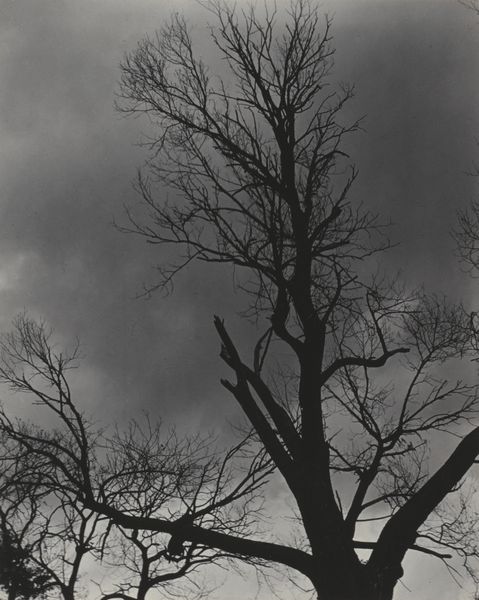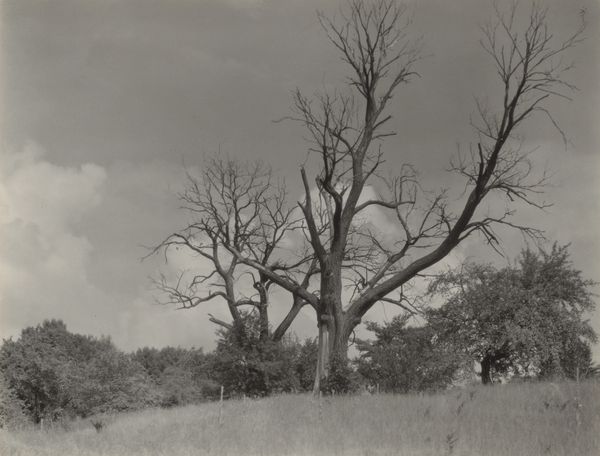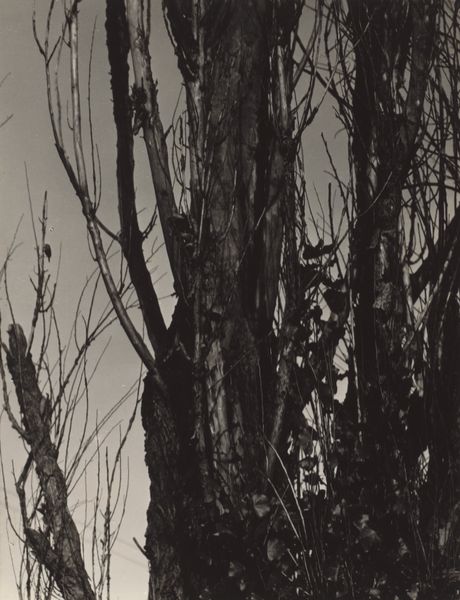
photography, gelatin-silver-print
#
black and white photography
#
pictorialism
#
landscape
#
photography
#
gelatin-silver-print
#
monochrome photography
#
realism
#
monochrome
Dimensions: sheet (trimmed to image): 11 × 8.6 cm (4 5/16 × 3 3/8 in.) mount: 33 × 27.2 cm (13 × 10 11/16 in.)
Copyright: National Gallery of Art: CC0 1.0
Curator: Oh, it's so stark. Like a skeleton against the sky. Eerie, in a beautiful way. Editor: Precisely, and what you’re experiencing is carefully captured in Alfred Stieglitz's “Dead Chestnut Tree,” a gelatin-silver print he made around 1937. Look at how Stieglitz uses light and shadow. Curator: Shadow and light, yes, but it's also about time, isn't it? You can practically feel the decades etched into that bark, see the slow creep of decay. You know, the texture is almost palpable. I want to reach out and trace the lines with my fingers, feel the roughness, the surrender. Editor: An interesting interpretation! From a formalist perspective, notice how the diagonal thrust of the branches intersects with the verticality of the trunk. It is a semiotic dance, reflecting perhaps the struggle between life and death. Curator: I suppose. For me, it reads as more of a poignant acceptance, but a stark reminder of our mortality! The photograph is so simple. It seems impossible it was captured around 1937. It just captures nature! It almost makes you wonder if something else like an existential crisis contributed. He died about ten years later after this photo so you can't help but feel like there is some personal sentiment here. Editor: That feeling, perhaps, derives from how the tree dominates the frame and commands your gaze. See how the monochromatic palette throws every line and crease into high relief? You have noted that there might be something poignant in how such details create emotional impact in landscape photography. But, indeed, the balance is fascinating. There's that little burst of foliage clinging to the base, too! A little juxtaposition. Curator: It feels like a promise or hope. Like a tiny defiant laugh against the inevitable. Do you ever wonder what was in the camera, so to speak, behind Stieglitz’s lens? Editor: Hmmm. That is open to personal imagination I feel. Thank you. Curator: Agreed!
Comments
No comments
Be the first to comment and join the conversation on the ultimate creative platform.
